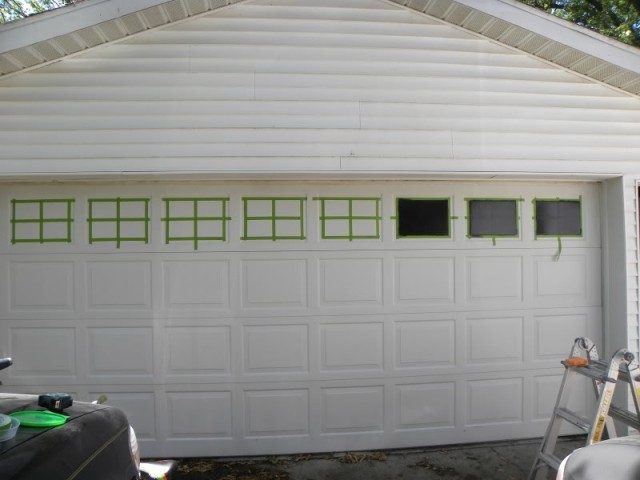
Before you decide whether to tear down a wall or not, you should know what its materials are. Non-load-bearing walls are more difficult to remove. It can be dangerous and messy to smash them with hammers. It's better to remove walls in layers, similar to peeling onions. To begin, you will need to get rid of any objects that may be inside the wall. Next, you'll need to take out the drywall. You can then remove all wall support structures, and the existing studs will need to be cut down.
Before you can start, it is important to determine if the wall has load bearing capacity. This can be a difficult task if the wall is constructed of bricks. You will need to obtain a report from a structural engineer in such cases. The next step will be to determine if the wall has any plumbing in it. If so, you will need to reroute the pipes and electrical outlets. Taking out load-bearing walls can be very dangerous.

You might consider tearing down a wall if you are renovating an old home. This is a great idea to increase the space in your home and make it more inviting. Once you have this information, you can get started on a design. By knocking down a wall, you can get more space in your house. Be sure to protect your property. Consider the effect of tearing down a space on the surrounding property.
Before you begin tearing down a building, identify whether it is load-bearing. Examining a wall closely can often tell you if it is load-bearing. You can also check for drains in basements or crawlspaces if you are working on a second-floor. Once you have checked for drains in the basement or crawlspace, you can proceed to removing and repairing the wall. This is a great way of opening up the space and letting more light in.
Before you start tearing down a wall you need to check for any plumbing. It is important to check if the wall can support its weight by looking at it carefully. Sometimes a sink has drains that are hidden within the wall. You should check the pipes under it to make sure that they flow freely. If they are located in the crawlspace you must also turn off the water and electricity mains.

Before tearing down a wall, make sure you shut off the water supply and the circuit breakers in the home. If you're tearing down a wall in a crawlspace, be sure to consider the plumbing. If the toilet or sink is blocked, it could be a load-bearing wall. You may also be able to search for other plumbing outlets if the wall is being removed from a second-floor level. Check your crawlspace.
FAQ
How do I select a competent contractor?
Ask your family and friends for recommendations when choosing a contractor. You can also look online for reviews. Look online for reviews to ensure the contractor you choose is experienced in the construction area you are interested. Ask for references and check them out.
What time does it take to finish a home remodel?
It depends on the size of the project and the amount of time that you spend each day. The average homeowner spends between three to six hours per week on the project.
What should I think about when buying a house?
You need to ensure you have enough funds available to cover closing costs before you buy a home. Refinancing your loan is an option if cash is tight.
How should house renovations be ordered?
It is important to determine where you want to place everything when renovating your house. If you're planning on selling your home soon, it is important to consider how you wish to present your home for potential buyers. The next step is to plan the layout of your living, kitchen, and bathroom. Once you have chosen the rooms you want to remodel, you can start looking for contractors who can help you. You can then begin your renovations once you have hired an expert contractor.
Are there ways to save money on home renovations?
By doing all the work yourself, you can save money. Consider reducing the number or people that you employ during renovations. Another option is to try to lower the cost of the materials you use in your renovations.
Do I need an architect or builder to help me?
If you are planning to renovate your own home, it may be easier to just hire someone else to do the work for you. An architect or builder is a good option if you plan to buy a new house.
Can I rent a dumpster?
Yes, you can rent a dumpster to help you dispose of debris after completing your home renovation. Renting a dumpster will help you keep your yard clear of debris and trash.
Statistics
- It is advisable, however, to have a contingency of 10–20 per cent to allow for the unexpected expenses that can arise when renovating older homes. (realhomes.com)
- They'll usually lend up to 90% of your home's "as-completed" value, but no more than $424,100 in most locales or $636,150 in high-cost areas. (kiplinger.com)
- A final payment of, say, 5% to 10% will be due when the space is livable and usable (your contract probably will say "substantial completion"). (kiplinger.com)
- Most lenders will lend you up to 75% or 80% of the appraised value of your home, but some will go higher. (kiplinger.com)
- Rather, allot 10% to 15% for a contingency fund to pay for unexpected construction issues. (kiplinger.com)
External Links
How To
How to renovate an older house
Let's start by deciding what type of renovations you would like to undertake. This could include everything from simply updating your kitchen appliances to completely transforming the whole house into something new.
After you've determined the type of renovation you want, you should consider how much money you can spend. You might discover that you don't have enough funds for the entire project. This is a sign that you may not have enough funds to cover the entire cost of the project.
Before you start work on your renovations, there are a few things you should consider. You must ensure you have all the permits needed for the job. It's also worth checking whether you need planning permission to carry out certain types of work. For example, if you plan to add extensions to your home, you might need to apply for building consent.
Before you start work on the house it is best to check with the local council website to determine if additional permits are required. Make sure you check whether each section of the house needs to be given planning permission. If you plan to do major renovations, such as replacing a roof, it is advisable to consult your insurance provider to ensure that you have sufficient coverage.
The next step after obtaining all necessary permits is to pick the right materials and tools for the job. There are many different options available, so it's important to take your time to research them thoroughly. Some of the most common items that people use during their renovation projects include paint, wallpaper paste, flooring, tiles, carpets, insulation, fencing, doors, windows, lighting, plumbing, heating systems, electrical wiring, plasterboard, timber, concrete, bricks, tiling, mirrors, sinks, taps, toilets, washing machines, ovens, refrigerators, microwaves, dishwashers, vacuum cleaners, carpet cleaning equipment, air conditioning units, fireplaces, chimneys, and even garden furniture!
You should consider the product's overall quality when shopping for these items. Poor quality products can be expensive and last for a very short time. Good quality products, however, will last longer and provide more value for your money. When you are buying any item, ensure that you only purchase what is necessary for the job. Don't buy too many because you could end up wasting precious resources and having to discard large quantities of material. You should instead buy only what you really need.
After you've selected the right materials for your job, you should plan where to store them while working on the property. If you're renovating a large area of the house, then you might need to rent storage space in order to keep all your supplies safe until you're ready to put them back inside the house. You might also consider asking family and friends to move your belongings around.